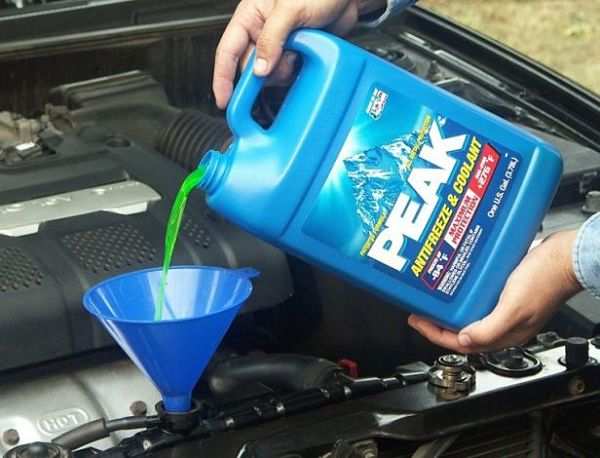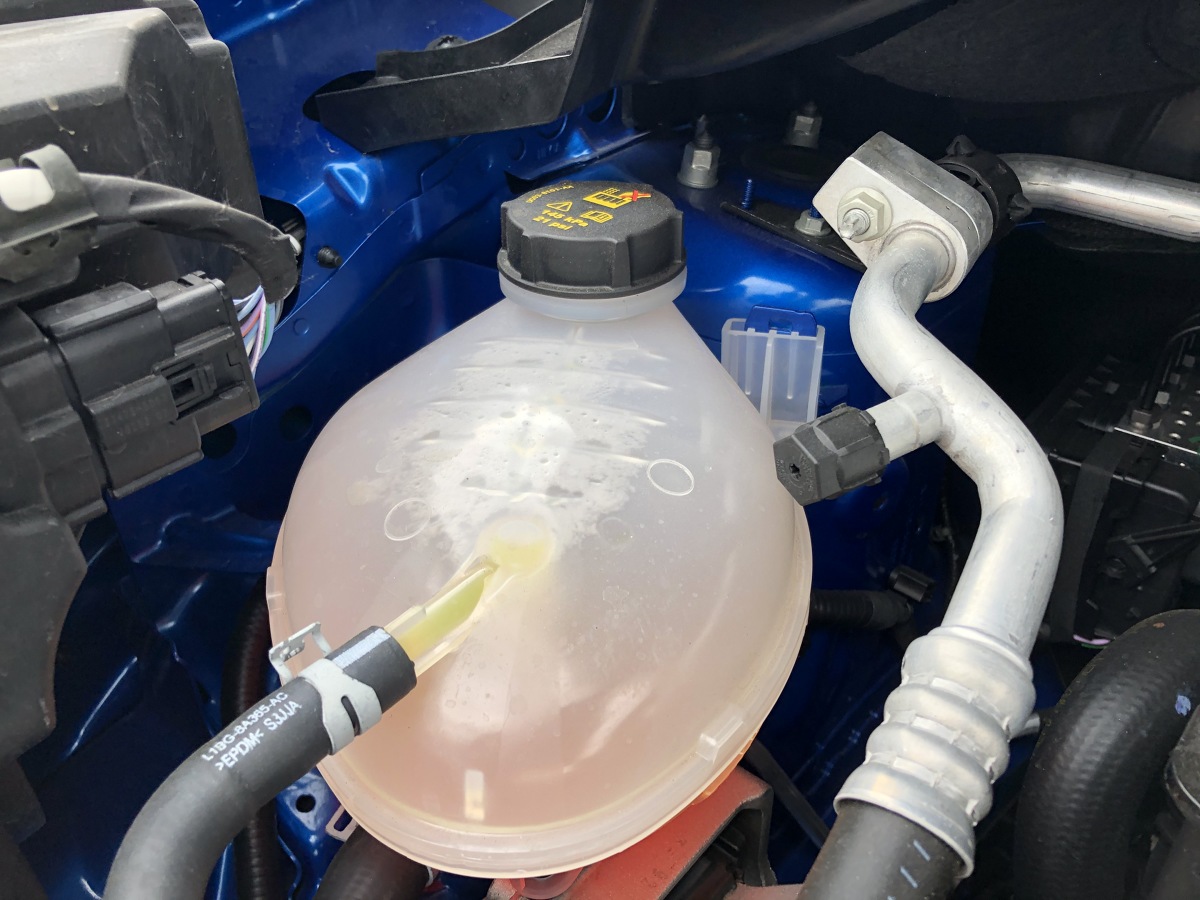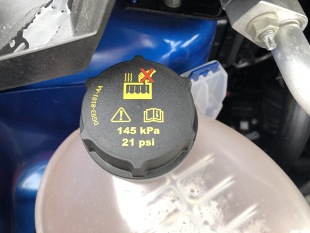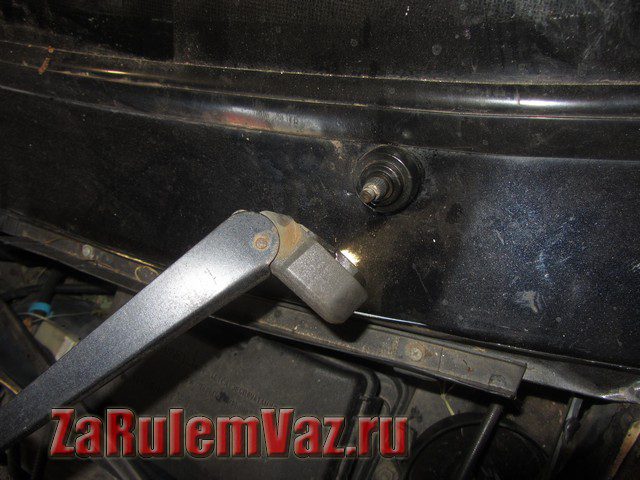
Coolant. When to replace it?
Content
 Apart from engine oil and brake fluid, coolant is the third and most important working fluid in our vehicle. Unfortunately, although it plays a very important role, in everyday use it is often underestimated and forgotten.
Apart from engine oil and brake fluid, coolant is the third and most important working fluid in our vehicle. Unfortunately, although it plays a very important role, in everyday use it is often underestimated and forgotten.
Actually, what is the coolant in the car for?
Its task is to keep the temperature of the power unit in the optimal range. And as it rises, the coolant begins to transfer heat energy between the engine and the radiator where it cools to be able to dissipate the temperature in the system again. Another secondary function of the liquid is to heat the car interior.
Of course, the drive can also be cooled with air - this is the so-called direct cooling (as it was, for example, in the famous Toddler), but this solution - although cheaper - has many disadvantages that force most manufacturers to use a classic liquid cooling system ( so-called indirect cooling).
Coolant. Too hot, too cold
The conditions under which the coolant "works" are unenviable. In winter - minus temperatures, often reaching minus 20, minus 30 degrees C. In summer, over 110 degrees C. And it's hard to believe that an ordinary tap was used to cool the engine! Today, fortunately, we can only see water evaporating from a radiator on archival films.
Therefore, the coolant must have a low, even -35, -40 degrees C freezing point and a high boiling point.
The coolant consists of water, ethylene or propylene glycol and an additive package. The task of glycol is to lower the freezing point of the liquid. Since glycol is caustic, additives include, among others. anti-corrosion additives (so-called corrosion inhibitors), stabilizers, anti-foam additives, dyes.
There are currently three types of anti-corrosion additives used in coolants. Depending on the type of additive, there are IAT, OAT or HOAT fluids. The vehicle manufacturer specifies in the vehicle owner's manual which type of anti-corrosion additive should be used in a given engine.
IAT Fluid (Inorganic Additive Technology - inorganic additive technology) is often recommended for engines with a cast iron block and an aluminum head. The main components of anti-corrosion additives are silicates and nitrites, which accumulate inside the system, preventing corrosion. Silicates easily settle on metal parts, and when their content in solution falls below 20%, deposits form. The disadvantage of silicate corrosion inhibitors is that they wear out quickly, so IAT fluids require frequent replacement (typically every 2 years). Typically, IAT fluids are colored green or blue.
OAT (organic acid technology - technology of organic additives) - organic acids are used instead of silicates. The protective anti-corrosion layer is 20 times thinner than in IAT technology. Organic acids react with the lead solder commonly used in older car radiators, so OAT is used in new types of cars with aluminum radiators. OAT type refrigerant also has better heat dissipation than IAT type liquid and increased durability, therefore it belongs to liquids with an extended service life and is usually colored orange, pink or purple.
HOAT Fluid (Hybrid Organic Acid Technology - hybrid technology of organic additives) contains anti-corrosion additives based on silicates and organic acids. Simply put, we can say that they contain the benefits of IAT and OAT liquids. These fluids behave like IATs but have a longer life and provide better protection to aluminum components and further protect the water pump from pitting.
Radiator fluids are commercially available as a concentrate to be diluted in appropriate proportions with demineralized water or as a ready-to-use solution. The latter are also the easiest to use in everyday life.
How to check the coolant level?
 Anyone, even an inexperienced driver, can check the coolant level. However, there are a few important details to keep in mind. First of all, the car must be put on a flat surface. It is imperative that the car's engine, and therefore the fluid, be cooled. For this reason, it is absolutely impossible to check the fluid level immediately after the car starts moving and stops.
Anyone, even an inexperienced driver, can check the coolant level. However, there are a few important details to keep in mind. First of all, the car must be put on a flat surface. It is imperative that the car's engine, and therefore the fluid, be cooled. For this reason, it is absolutely impossible to check the fluid level immediately after the car starts moving and stops.
The optimum coolant level must be between the min. and max. on the tank.
Too low a fluid level may indicate a leak in the cooling system, and a too high level may be due to the presence of air in the system. In both cases, the cause of the fluid level may also be damage to the cylinder head gasket.
After unscrewing the cap - remember, however, provided that the liquid has cooled - we can also see if the color of the liquid has changed and if there are any impurities in it. A change in the color of the fluid may indicate that engine oil is being mixed with it.
When should the fluid be changed?
Coolant gradually loses its properties over time, regardless of whether the car is in the garage or on the road. Therefore - depending on the type of fluid - it should be changed every 2, 3 or maximum 5 years. Information about which fluid should be used in this car and after what time it should be changed can be found in the car's owner's manual or in the service. We can also find it on the packaging of the liquid, but first we need to know which type to use.
See also: Tax on the purchase of a car. When do I have to pay?
Coolant replacement is essential when buying a used car. You should also immediately replace the brake fluid and engine oil along with a set of filters.
Coolant mixing
Although ethylene glycol based liquids can be mixed with each other, we should only use this solution in an emergency when we just need to add liquid in an emergency (in an emergency we can also add plain water or better distilled). And since we get coolant at almost every gas station today, we don't have to use emergency solutions. It should also be remembered that after such mixing it is always good to drain the old coolant, flush the system and fill in a new one recommended for our engine.
See also: Testing Skoda Kamiq - the smallest Skoda SUV

